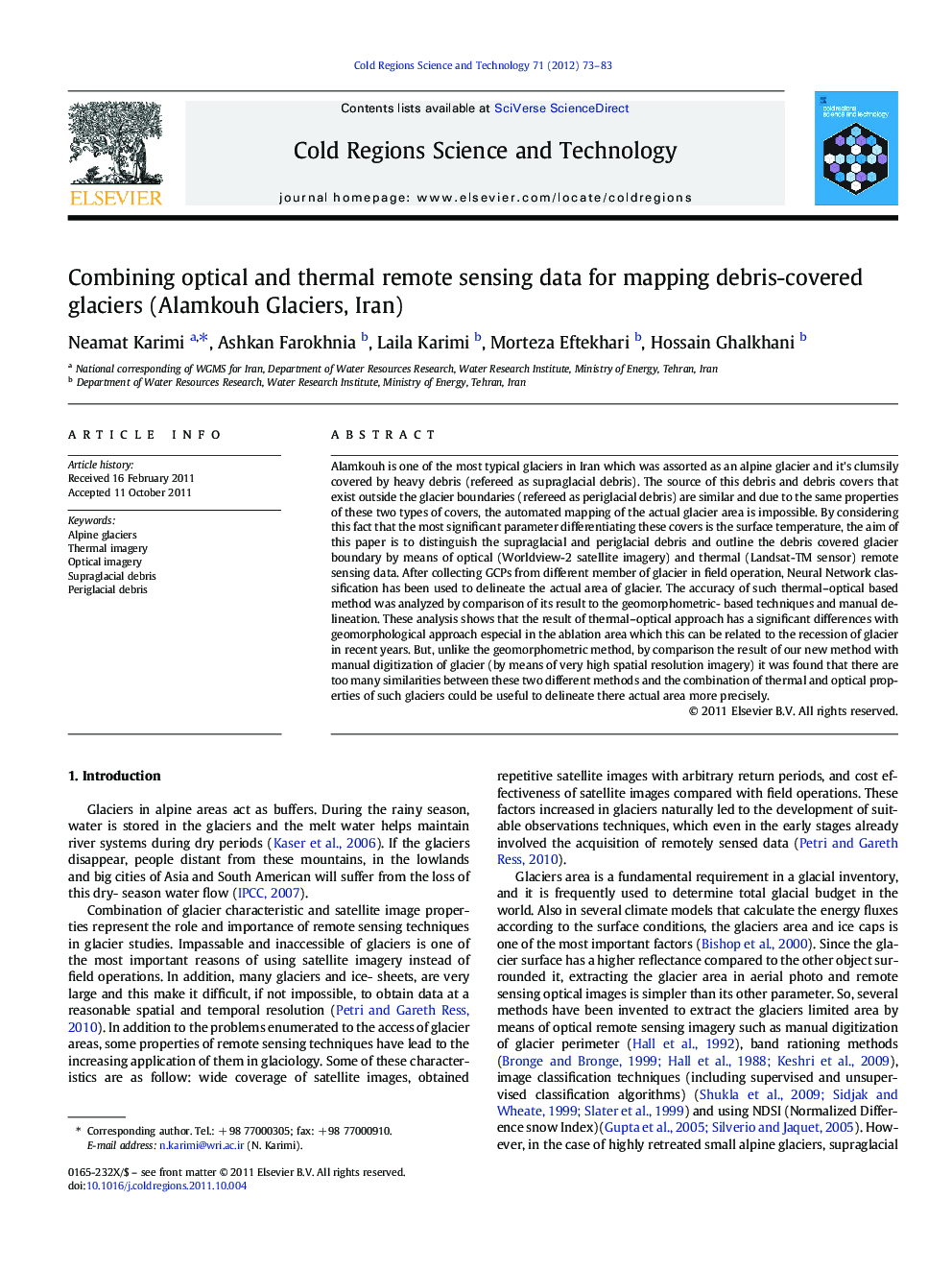| کد مقاله | کد نشریه | سال انتشار | مقاله انگلیسی | نسخه تمام متن |
|---|---|---|---|---|
| 4676013 | 1634486 | 2012 | 11 صفحه PDF | دانلود رایگان |

Alamkouh is one of the most typical glaciers in Iran which was assorted as an alpine glacier and it's clumsily covered by heavy debris (refereed as supraglacial debris). The source of this debris and debris covers that exist outside the glacier boundaries (refereed as periglacial debris) are similar and due to the same properties of these two types of covers, the automated mapping of the actual glacier area is impossible. By considering this fact that the most significant parameter differentiating these covers is the surface temperature, the aim of this paper is to distinguish the supraglacial and periglacial debris and outline the debris covered glacier boundary by means of optical (Worldview-2 satellite imagery) and thermal (Landsat-TM sensor) remote sensing data. After collecting GCPs from different member of glacier in field operation, Neural Network classification has been used to delineate the actual area of glacier. The accuracy of such thermal–optical based method was analyzed by comparison of its result to the geomorphometric- based techniques and manual delineation. These analysis shows that the result of thermal–optical approach has a significant differences with geomorphological approach especial in the ablation area which this can be related to the recession of glacier in recent years. But, unlike the geomorphometric method, by comparison the result of our new method with manual digitization of glacier (by means of very high spatial resolution imagery) it was found that there are too many similarities between these two different methods and the combination of thermal and optical properties of such glaciers could be useful to delineate there actual area more precisely.
► In this study we distinguish the supraglacial and periglacial debris covers by using satellite data.
► Worldview-2 (Optical bands) and Landsat (Thermal bands) have been used.
► Neural Network classification has been used to delineate the actual area of glacier.
► The results were compared with geomorphometric techniques and manual delineation.
► These comparisons imply the precise result of this technique in glacier area delineation.
Journal: Cold Regions Science and Technology - Volume 71, February 2012, Pages 73–83